Yates Account
Join now
Create a Yates account today!
Sign up to join the Yates Garden Club for monthly e-mails packed with seasonal inspiration, tips for success & exclusive promotions.
Plus if you’re a Garden Club member you can take part in the Yates Growing Community - a blog to share successes, get advice & win prizes in fun challenges along the way!

Forgot password
Enter the email address associated with your account, and we'll email you a new password.

What is Moss, Algae and Lichen?
Moss, liverwort, lichen and algae often become problems in shaded, poorly drained or heavily compacted areas of the lawn and garden.
Mosses and liverworts are both bryophytes. This ancient group of very simple plants has been around for about 450 million years, going by fossil evidence. Because they're radically different to other plant species, you’ll need to take special steps to control them. For most plant species, systemic weedkillers kill by being absorbed into the target plant, then circulated around the plant tissue in sap (xylem and phloem), through the plant’s vascular system. Moss doesn’t have a vascular system, so systemic weedkillers are prevented from doing their job, at a very basic level.
Technically, mosses and liverworts don’t even have roots or leaves! They also reproduce with spores (rather than seeds), relying on water and raindrop splashes for fertilisation and to spread the spores. This explains how moss can rapidly colonise wet areas, to form thick clumps or mats.
There are two main types of liverworts, Leafy Liverworts and Thalloid Liverworts. The leafy type are hard to tell apart from mosses, but the thalloid liverworts have a distinctive flat leaf that's easy to identify.

Roofs in deep shade are an attractive environment for mosses.
Algae is completely different: it's a very diverse group of organisms that aren't classified as plants. Algae can photosynthesize like plants can, but otherwise they don't have much in common.
Algae species are usually aquatic, ranging from the single-celled phytoplankton that forms cloudy 'blooms' in water, all the way up to large, complex 'macroalgae' like seaweeds (e.g. sea lettuce, or giant kelp). Some species of algae have adapted to live on land, exposed to air; this 'subaerial' algae is the type you'll encounter in gardens, or around your house. It can appear as a green or black slimy film on paths, steps or walls; it's very slippery when wet and can be quite hazardous. It's very common to see algae co-existing with moss.
Sometimes you'll see a slimy, jelly-like green or brown substance growing on gravel or hard-packed soil; this will probably be Nostoc, commonly referred to as blue-green algae. Nostoc is a species of cyanobacteria. It tends to die off and go crusty when it dries out.
Lichen is a really special case. It's not a single species, it's a living community of algae or cyanobacteria, that have formed a symbiotic relationship with various fungi, yeasts and bacteria. The fungus team provides water, nutrients and a habitat for the algae to live in. In exchange, the algae team supplies the fungi with sugars.

Algae and moss on a wet brick wall
How to Control Moss, Algae and Lichen
If you need to control moss, lichen or algae, reach for Yates Surrender Moss Killer. It's safe to use on your lawn grass and most hard surfaces, so it's very versatile. This is the one to go for if you have moss on paths, pavers or your driveway. You can even use it on timber decking and steps to clean up slippery green algae! Yates Surrender Moss Killer is very easy to mix and apply from a sprayer or watering can.
For a dual-action solution just for your lawn, Yates Weed n Feed Mosskiller & Fertiliser is a great alternative. It’s a concentrated blend of iron and nitrogen - applied over mossy patches in lawns it quickly burns and kills off the moss. After 2 weeks, the dead moss can be raked away.
The dual-action bonus is that Yates Weed n Feed Mosskiller & Fertiliser delivers a rich nitrogen boost, to help feed the lawn and encourage growth. A strong, healthy lawn can resist moss infestations better.
Pro Tip: Yates Weed n Feed Mosskiller & Fertiliser can stain concrete or tiles, so if your lawn has hard surfaces close by, Yates Surrender Moss Killer may be a better choice for you.

Moss growing in a lawn
How to Control Moss, Algae and Lichen, Long Term
For a long-term improvement, it's best to tackle the underlying conditions that make the area attractive to moss and algae.
- If the soil is compacted (especially if it's heavy clay soil), spike it with a garden fork to aerate it and improve drainage. Simply push the fork in to at least 10cm and wriggle it back and forth to create larger holes. Do this every 10-15cm, working your way around the whole lawn. It's quite hard work, but it really pays off. Immediately after aerating you can apply gypsum to the lawn, which will help to improve the soil porosity.
- If there's too much shade, cut back trees or shrubs to let in more sunlight.
- If the ground is too wet, you might need to construct drains to remove the excess water.

Lichen growing on a fruit tree
Trees that lack vigour, or have begun to die back, often have moss or lichen growing on the bark. This growth can also occur on healthy trees, in sites with high humidity. The lichen itself doesn't actually affect the health of the tree; lichen isn't a parasitic organism, it's just taking advantage of living conditions that suit it.
To address lichen in trees, improve air circulation by pruning overcrowded branches. Also take off any overhanging growth from neighbouring plants. You can improve tree health by watering, mulching and applying a fertiliser. To remove lichen or moss from deciduous trees, you can apply Yates Lime Sulfur to the affected areas of bark, during winter while the tree is leafless.

A Thalloid Liverwort (Marchantia polymorpha, aka common liverwort)
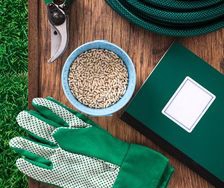
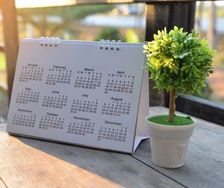
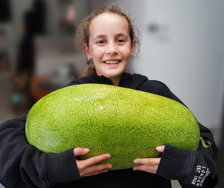
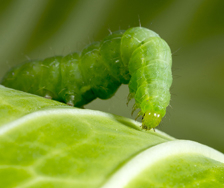
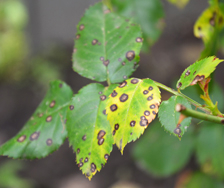
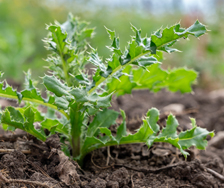
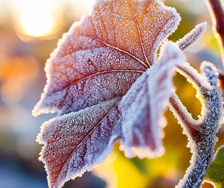



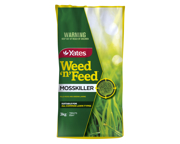





Share
Share this article on social media